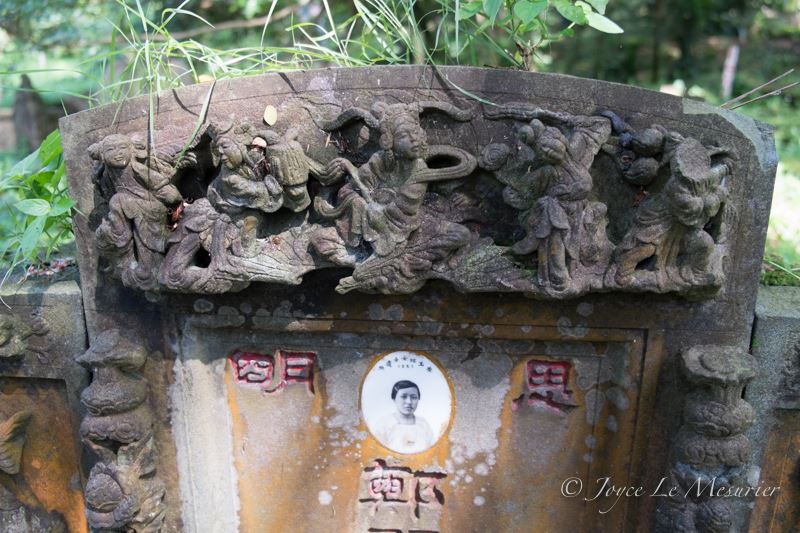Ceramic Photos on Tombs
0
31 October 2013
At Bukit Brown, it is not uncommon to find ceramic photos of the deceased on their tombstones. They have withstood the test of time and weathered the elements of sun and rain. This one was spotted in pristine condition during the guided walk on tiles and tomb carvings on Sunday 27 October.
Mrs Tay Koh Bok (Madam Wee Geok Kiew )
The technology for ceramic photos date back to 1854, originating from France. How are they made?
“A porcelain (or ceramic) portrait is produced by firing an image onto a porcelain plaque at very high temperatures in a kiln for several hours, creating a permanent bond. The result is a vivid portrait that resists fading and the elements for 100 years or more.” source
“….transferring photo images to ceramic was a multi-step, laborious, time-consuming & potentially hazardous process, involving photographic glass plates & several types of light-sensitive emulsion salts (some of which are highly toxic). The emulsified ceramic piece (ie. now affixed with the photo) was then repeatedly fired at high temperature for many hours to obtain an impervious vitrified surface, which was then coated with a protective sealant.” source
From the mid 1930s onwards, the technology for ceramic photos became available in Singapore Before that, ceramic photos were mostly made in China, Holland, Germany & America. So the photo of Tay (1929) could conceivably have been ordered from China.
Nah Guan Seng of Scientific Photo Studio appeared to be the 1st person to offer photo ceramic services here. His photo studio was located at Bras Brasah Road, while the photo lab was at Paya Lebar.
New Singapore Industry: Ceramic Portraits (ST – 15 Sep 1935):
http://newspapers.nl.sg/Digitised/Article.aspx…
EXCERPT: “The advantages of ceramic portraiture over ordinary photography are many. It never fades, whether exposed to sun or rain, and for use [on] a grave, it has no rival.Kiangsi porcelain is said to be the best in the world for this purpose and is largely used. The work of burning, the most difficult part of the job, is done at the Studio’s laboratory at Paya Lebar. Expert knowledge of the art and great care are necessary in regulating the heat. ”
More on ceramic photos here
The most spectacular portraits of the deceased are the A4 size photos on the Tok tombs, although it is unclear whether the ceramic photo technology was used. The photo of Onn Cheng Tuan shows her in traditional nonya wear and accompanying jewelry which also speaks to the material culture of those times.
Editors note: Research by Pat Sg of Heritage Singapore Bukit Brown Cemetery





Comments